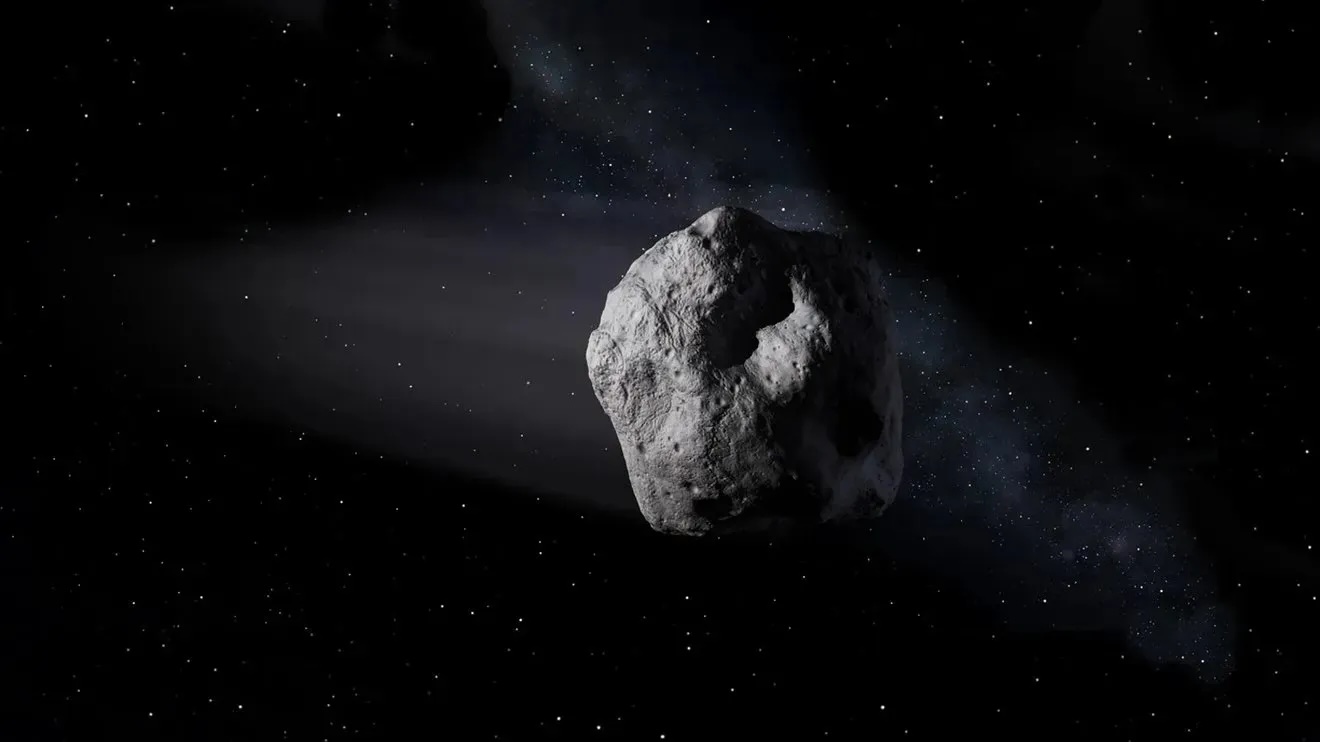When you purchase through links on our web site , we may garner an affiliate commission . Here ’s how it mould .
UPDATE : you could follow the asteroid flyby on the television above for yourself thanks to animated streamfrom The Virtual Telescope Project , which will begin at 1:00 p.m. ET on Feb. 2 .
A " potentially hazardous " football sports stadium - size asteroid will hurry safely past Earth on Friday ( Feb. 2 ) , and , in doing so , will reach its close detail to our satellite for more than 100 years . It will also be at least several one C before the space rock ever get this close-fitting to us again .

The asteroid will pass Earth as it hurtles through space at 41,000 mph.
The monumental asteroid , named 2008 OS7 , is around 890 foot ( 271 meters ) across and will pass by Earth at a aloofness of around 1.77 million miles ( 2.85 million km ) , concord toNASA ’s Jet Propulsion Laboratory ( JPL ) . For context , that is more than seven times further away than the moonlight orbits Earth .
As it passes by Earth , the asteroid will be traveling at a speed of around 41,000 mph ( 66,000 kilometer / h ) , fit in to JPL .
To compare this space rock ’s girth to that of other asteroids , it is around half the sizing of asteroid Bennu , whichNASAvisited and took samples of , and at least 70 times small than the Vredefort shooting star — thelargest known blank space sway to ever arrive at Earth .

2008 OS7 has a highly elliptical orbit around the sun (white ring).
Related:‘Planet killer ' asteroids are conceal in the sun ’s public eye . Can we stop them in clock time ?
Due to its size and law of proximity to Earth , the asteroid isclassified as potentially hazardousdespite the fact it will never come close enough to impact our planet , JPL prediction show . If the space rock did ever ram to Earth , it isbig enough to pass over out a large city , such as New York .
However , the aim is n’t sizeable enough to be weigh a"planet killer " asteroid , such as the Vredefort shooting star or the distance careen thatwiped out the dinosaur 66 million geezerhood ago .

NASA has identified around 25,000 potentially hazardous asteroids , although a significant percentage of these are not as prominent as the impending space rock . One of these deadly asteroids is expected to come to Earth every 20,000 years , Live Science antecedently reported .
2008 OS7 has a highly elliptic orbit , meaning that it does not orbit evenly aroundthe sun . Because of this , the distance between it and Earth varies wildly whenever the distance rock ‘n’ roll makes a close-fitting approach to our planet . For example , when the asteroid approach us presently after its discovery in 2008 , it was around 55.9 million miles ( 90 million kilometre ) off from us , which is more than 30 times further away than it will be this week , according to JPL .
— The 8 most Earth - shatter asteroid discoveries of 2023

— How long can an asteroid ' hold up ' ?
— NASA ’s most desire : The 5 most severe asteroids in the solar system
Scientists have only directly observed the asteroid fly by Earth twice before . But based on the space rock and roll ’s orbital data point , JPL has simulated every close approach the asteroid has made since 1900 and omen every nigh approach it will make until 2198 . At no other point in this nearly 300 - twelvemonth dataset is the asteroid expected to be closer to our major planet than on Feb. 2 this year .

Several other asteroids have made airless approaches to or directly hit Earth in the last few weeks .
On Jan. 27 , anairplane - size asteroid pass along by Earthat a distance of just 220,000 miles ( 354,000 km ) , which is slightly closer than the lunar month is to our satellite . And on Jan. 21 , a nestling - size of it asteroid was detect by astronomers around 3 hours before itexploded in the atmosphere above Germany .













